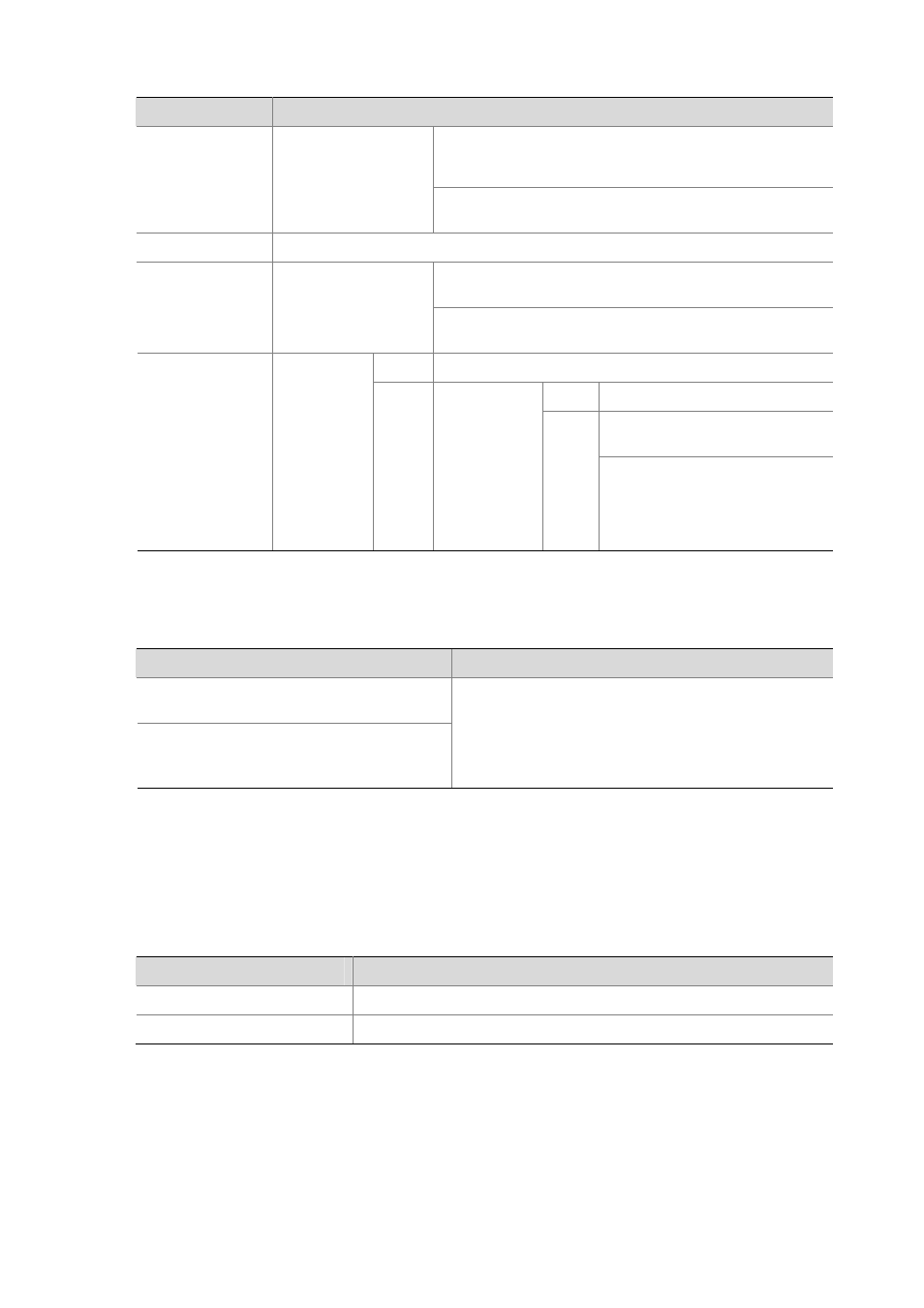Dldp neighbor state, Precautions during dldp configuration, Precautions during dldp configuration -5 – H3C Technologies H3C WX3000 Series Unified Switches User Manual
Page 158

20-5
Table 20-5
Process received DLDP packets
Packet type
Processing procedure
If this neighbor entry does not exist on the local device, DLDP
creates the neighbor entry, enables the entry aging timer, and
turns to probe status.
Advertisement
packet
Extract neighbor
information
If the neighbor entry already exists on the local device, DLDP
refreshes the entry aging timer.
Flush packet
Delete the neighbor entry from the local device
Create the neighbor entry if this neighbor entry does not exist
on the local device.
Probe packet
Send echo packets
containing both
neighbor and its own
information to the peer
If the neighbor entry already exists on the local device, refresh
the entry aging timer.
No
Discard this echo packet
No
Discard this echo packet
Set the neighbor flag bit to
bidirectional
Echo packet
Check
whether the
local device
is in probe
status
Yes
Check whether
neighbor
information in
the packet is
the same as
that on the
local device
Yes
If all neighbors are in bidirectional
communication state, DLDP turns
from probe status to advertisement
status, and sets the echo waiting
timer to 0.
3) If no echo packet is received from the neighbor, DLDP performs the following processing:
Table 20-6
Processing when no echo packet is received from the neighbor
No Echo packet received from the neighbor
Processing procedure
In normal mode, no echo packet is received
when the echo waiting timer expires
In enhanced mode, no echo packet is received
when the enhanced timer expires
DLDP turns into disable status. It outputs log and tracking
information, sends flush packets. Depending on the
user-defined DLDP down mode, DLDP disables the local
port automatically or prompt the user to disable the port
manually. DLDP sends the RSY message and deletes the
neighbor entry.
DLDP neighbor state
A DLDP neighbor can be in one of these two states: two way and unknown. You can check the state of
a DLDP neighbor by using the display dldp command.
Table 20-7
Description on the two DLDP neighbor states
DLDP neighbor state
Description
two way
The link to the neighbor operates properly.
unknown
The device is detecting the neighbor and the neighbor state is unknown.
Precautions During DLDP Configuration
z
DLDP works only when the link is up.
z
To insure unidirectional links can be detected, you must make sure: DLDP is enabled on both ends,
and the interval of sending advertisement packets, authentication mode and password are
consistent on both ends.